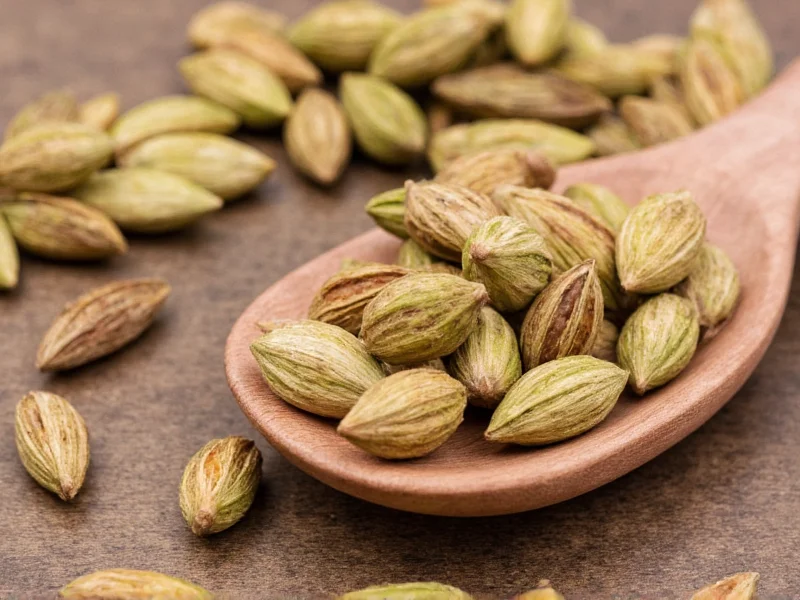Understanding Cardamom Pods and Their Culinary Value
Cardamom pods, the small triangular seed cases of the Elettaria cardamomum plant, contain intense aromatic properties that transform ordinary dishes into extraordinary culinary experiences. Green cardamom pods (the most common variety) offer a complex flavor profile blending citrus, floral, and herbal notes with subtle peppery warmth. Unlike pre-ground cardamom powder, which loses potency quickly, whole pods preserve their volatile oils, delivering superior flavor when properly prepared.
Preparing Cardamom Pods for Maximum Flavor
Before using cardamom pods, proper preparation ensures optimal flavor extraction. Fresh pods should feel firm with a vibrant green color and emit a strong aroma when squeezed. Stale pods appear dull and produce little scent. For most applications, you'll need to process the pods to release their flavor compounds:
| Preparation Method | Best For | Technique |
|---|---|---|
| Whole pods | Biryanis, stews, chai | Add early in cooking; remove before serving |
| Crushed pods | Rice dishes, braises | Gently crack with knife side or mortar |
| Extracted seeds | Baking, coffee, spice blends | Split pod and scrape out black seeds |
| Freshly ground | Desserts, sauces | Grind seeds in mortar or spice grinder |
Step-by-Step Guide to Using Cardamom Pods
Using Whole Cardamom Pods
When incorporating whole cardamom pods into dishes like Indian biryani or Middle Eastern rice pilafs, add them during the initial cooking phase. The extended cooking time allows flavors to infuse gradually. Typically, 4-6 pods suffice for a dish serving four people. Remember to remove whole pods before serving, as biting into them creates an unpleasantly intense flavor burst. This method works exceptionally well for how to use cardamom pods in rice dishes where gradual flavor infusion is desired.
Crushing Cardamom Pods for Enhanced Flavor
For dishes requiring more immediate flavor release, such as Scandinavian baked goods or Indian curries, crushing the pods significantly increases surface area and accelerates flavor extraction. Place pods on a cutting board and gently press with the flat side of a chef's knife until they crack open. Alternatively, use a mortar and pestle for controlled crushing. This technique is ideal for how to crush cardamom pods for baking applications where you want the distinctive aroma without visible pod fragments.
Extracting and Using Cardamom Seeds
For recipes requiring fine texture like cakes, cookies, or coffee blends, extract the tiny black seeds from within the pods. Split the pod lengthwise using your thumbnail or a small knife, then scrape out the seeds. One pod typically contains 10-20 seeds. These can be used whole in coffee (3-4 seeds per cup) or ground fresh using a mortar and pestle or spice grinder. Freshly ground cardamom provides noticeably superior flavor compared to pre-ground versions, making this method essential for how to use cardamom pods in coffee preparation.
Optimal Applications for Different Cardamom Pod Techniques
Understanding when to use each preparation method elevates your cooking. Whole pods shine in slow-cooked dishes where their structure holds up to prolonged heat. Crushed pods work best in medium-duration cooking like rice dishes where you want more pronounced flavor without seed extraction. Extracted seeds deliver maximum intensity for quick-cooking applications and baked goods. For Scandinavian lussekatter (saffron buns), freshly ground cardamom seeds create the distinctive aromatic profile that defines authentic recipes.
When substituting for ground cardamom in recipes, use three pods per 1/4 teaspoon of powder. However, avoid this substitution in recipes specifically designed for whole pods, as the flavor release dynamics differ significantly. This knowledge addresses the common query about how many cardamom pods equal ground cardamom while emphasizing context-specific usage.
Avoiding Common Cardamom Pod Mistakes
Many home cooks make critical errors when using cardamom pods. Overusing pods creates overpowering, medicinal flavors rather than the desired aromatic complexity. Always start with fewer pods than you think necessary—you can add more later but cannot remove excess. Another frequent mistake involves using old, stale pods that have lost their volatile oils. Properly stored in an airtight container away from light, fresh pods maintain potency for 6-12 months. For optimal results in how to use green cardamom pods in cooking, always check freshness by squeezing the pod—it should release a strong, pleasant aroma.
Storage Techniques for Long-Lasting Flavor
To preserve cardamom's delicate flavor compounds, store pods in airtight glass containers away from heat and light. Avoid plastic containers which can absorb and later release flavors. For extended storage, freeze pods in vacuum-sealed bags—they'll maintain quality for up to two years. Never store near strong-smelling spices like cloves or cinnamon, as cardamom readily absorbs surrounding aromas. Proper storage ensures your how do you use cardamom pods efforts yield consistently excellent results.











 浙公网安备
33010002000092号
浙公网安备
33010002000092号 浙B2-20120091-4
浙B2-20120091-4